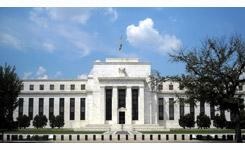March FOMC Meeting And Gold
 Yesterday, the Federal Reserve released their most recent monetary policy statement. How can it affect the gold market?
Yesterday, the Federal Reserve released their most recent monetary policy statement. How can it affect the gold market?
Rates Unchanged, but Fed’s Statement More Hawkish
 In line with expectations, the Fed kept the interest rates unchanged at between 0.25 and 0.50 percent. However, the FOMC statement was more hawkish than in January. It should not be surprising, given the recent calming down in the markets. Indeed, the Fed dropped from the statement the part that it would closely monitor global developments and their impact on the domestic economy and the balance of risks to the outlook (although the Fed noted that global economic and financial developments continued to pose a risk). Moreover, the U.S. central bank pointed out that inflation had picked up in recent months (but remained low), while the labor market strengthened again. Another argument for a more hawkish stance of the Federal Reserve is the fact that there was one dissenting vote (compared with no dissents in January). The President of the Federal Reserve Bank of Kansas City Esther L. George voted against the undertaken action, preferring to raise the target range for the federal funds rate to 0.50-0.75 percent.
In line with expectations, the Fed kept the interest rates unchanged at between 0.25 and 0.50 percent. However, the FOMC statement was more hawkish than in January. It should not be surprising, given the recent calming down in the markets. Indeed, the Fed dropped from the statement the part that it would closely monitor global developments and their impact on the domestic economy and the balance of risks to the outlook (although the Fed noted that global economic and financial developments continued to pose a risk). Moreover, the U.S. central bank pointed out that inflation had picked up in recent months (but remained low), while the labor market strengthened again. Another argument for a more hawkish stance of the Federal Reserve is the fact that there was one dissenting vote (compared with no dissents in January). The President of the Federal Reserve Bank of Kansas City Esther L. George voted against the undertaken action, preferring to raise the target range for the federal funds rate to 0.50-0.75 percent.
Given the current situation and recent data on the labor market and inflation, the U.S. central bank could have raised interest rates, but it chickened out again and decided to wait and monitor the situation longer before the move. Another explanation for inaction is that the Fed has become hostage to the financial markets, therefore its hands are tied when markets are not expecting a hike.
Path of Futures Hikes Softens
Let’s take a look at the Summary of Economic Projections. There are interesting changes in the macroeconomic projections. The projected rate of GDP growth declined from 2.4 percent in 2016 and 2.2 percent in 2017 to 2.2 and 2.1 percent, respectively. The unemployment rate was projected in March to be 4.6 in 2017, 4.5 in 2018, and 4.8 in the longer run, while in December the numbers were, respectively, 4.7, 4.7 and 4.9. The projection of the PCE inflation rate for 2016 declined from 1.6 to 1.2 percent (for the following years, the projections are the same). It is a significant decline. On the other hand, the recent projections of the core PCE inflation rate are almost the same as in December (there is a decline in 2017 from 1.9 to 1.8).
Last but definitely not least, the U.S. central bankers noticeably softened their view of the appropriate policy path. In March, the median FOMC member predicted that rates would increase to 0.9 percent in 2016 and to 3.3 percent in the longer run. As a reminder, in December, or just a few months ago, the median FOMC member saw rates at 1.4 percent in 2016 and at 3.5 percent in the longer term. It translates into only two more hikes this year (assuming hiking by 25 basis points). Therefore, the new plot is significantly more dovish than in December, when the median FOMC member expected four more hikes. We were always skeptical of the official Fed projections, since historically the U.S. central bankers have failed at predicting what they would do, and we predicted in the January Market Overview that the Fed would tighten its monetary policy in a more gradual way than expected. Now, the official projections are much closer to market expectations – investors are forecasting only one hike this year.
Conclusions
On balance, the signal sent by the Fed is clearly dovish. The FOMC members are saying “anticipate two, not four hikes in 2016”. In response, the markets scaled back their assessment even more, according to CME Fedwatch. The inability to act despite the fact that economic activity has recently been expanding at a moderate pace and the revisions of the Fed’s and market’s projections of the interest rate path are clearly bullish for the gold market. Indeed, the price of gold jumped yesterday from $1230 to above $1260.
Disclaimer: Please note that the aim of the above analysis is to discuss the likely long-term impact of the featured phenomenon on the price of gold and this analysis does not indicate (nor does it aim to do so) whether gold is likely to move higher or lower in the short- or medium-term. In order to determine the latter, many additional factors need to be considered (i.e. sentiment, chart patterns, cycles, indicators, ratios, self-similar patterns and more) and we are taking them into account (and discussing the short- and medium-term outlook) in our trading alerts.


















